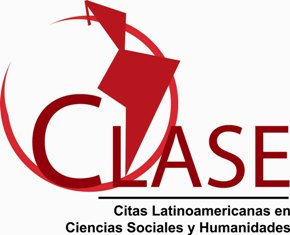From Opacity to Clarity: Demystifying Machine Learning Decisions in Education with Explainable AI
Palabras clave:
Artificial intelligence, explainable artificial intelligence, machine learning, educationResumen
La adopción de algoritmos de aprendizaje automático (ML) en la educación es cada vez mayor, con el objetivo de mejorar los procesos de enseñanza, aprendizaje y administración. Estos algoritmos son cruciales para el aprendizaje personalizado, la predicción del rendimiento de los alumnos y el diseño de planes de estudio. Sin embargo, su uso generalizado puede plantear problemas como la parcialidad, la falta de transparencia y la dependencia excesiva de las decisiones automatizadas. A menudo, los educadores necesitan ayuda para comprender el funcionamiento interno de los modelos de ML. Este artículo examina la IA explicable (XAI) como solución a estos problemas en la educación. Las técnicas de XAI pueden proporcionar a los educadores y administradores información valiosa sobre los algoritmos de ML, facilitando una toma de decisiones más informada. Discutimos la diferencia entre opciones algorítmicas transparentes y opacas y demostramos los beneficios tangibles de la XAI en la educación. Los modelos transparentes permiten a los educadores aprovechar su experiencia de forma eficaz, descubrir patrones ocultos y mejorar los resultados de los estudiantes.
Descargas
Citas
BOOK:
DOMINGOS, P. The Master Algorithm: How the Quest for the Ultimate Learning Machine Will Remake Our World. London: Penguin Books Limited, 2015.
MOLNAR, C. Interpretable Machine Learning: A guide for making black box models explainable. Victoria: Leanpub, 2023.
RUSSELL, S. J.; NORVIG, P. Artificial Intelligence: A Modern Approach. Hoboken: Pearson, 2021. (Pearson series in artificial intelligence).
SAMEK, W. et al. Explainable AI: Interpreting, Explaining and Visualizing Deep Learning. Cham: Springer International Publishing, 2019. v. 11700. DOI: https://doi.org/10.1007/978-3-030-28954-6. Available at: https://link.springer.com/content/pdf/10.1007/978-3-030-28954-6.pdf. Accessed on: 28 Feb. 2024.
BOOK CHAPTER:
ANCONA, M. et al. Gradient-based attribution methods. In: ANCONA, M. et al. Explainable AI: Interpreting, Explaining and Visualizing Deep Learning. Cham: Springer International Publishing, 2019. p. 169-191. DOI: https://doi.org/10.1007/978-3-030-28954-6_9. Available at: https://link.springer.com/content/pdf/10.1007/978-3-030-28954-6.pdf. Accessed on: 28 Feb. 2024.
BONIFRO, F. et al. Student Dropout Prediction. In: BITTENCOURT, I. I. et al. (Ed.). Artificial Intelligence in Education. Cham: Springer International Publishing, 2020. p. 129-140. DOI: https://doi.org/10.1007/978-3-030-52237-7_11. Available at: https://link.springer.com/content/pdf/10.1007/978-3-030-52237-7.pdf. Accessed on: 28 Feb. 2024.
MULLARKEY, M. T. et al. Citizen data scientist: A design science research method for the conduct of data science projects. In: TULU, B.; DJAMASBI, S.; LEROY, G. (Ed.). Extending the Boundaries of Design Science Theory and Practice. Cham: Springer International Publishing, 2019. p. 191-205. DOI: https://doi.org/10.1007/978-3-030-19504-5_13.
PATIL, T.; BHAVSAR, A. K. Data science team roles and need of data science: A review of different cases. In: KOTECHA, K. et al. (Ed.). Data Science and Intelligent Applications. Singapore: Springer Singapore, 2021. p. 13-22. DOI: https://doi.org/10.1007/978-981-15-4474-3_2. Available at: https://link.springer.com/content/pdf/10.1007/978-981-15-4474-3.pdf. Accessed on: 28 Feb. 2024.
SAMEK, W.; MÜLLER, K. R. Towards explainable artificial intelligence. In: SAMEK, W.; MÜLLER, K. R. (Orgs.). Explainable AI: Interpreting, Explaining and Visualizing Deep Learning. Cham: Springer International Publishing, 2019. p. 5-22. DOI: https://doi.org/10.1007/978-3-030-28954-6_1. Available at: https://link.springer.com/content/pdf/10.1007/978-3-030-28954-6.pdf. Accessed on: 28 Feb. 2024.
SINGH, P. Model deployment and challenges. In: SINGH, P. (Org.). Machine Learning Models to Production: With Flask, Streamlit, Docker, and Kubernetes on Google Cloud Platform. Berkeley: Apress, 2021. p. 55-66. DOI: https://doi.org/10.1007/978-1-4842-6546-8_2.
ARTICLE IN A PERIODICAL (MAGAZINE OR JOURNAL):
ADADI, A.; BERRADA, M. Peeking inside the black-box: A survey on explainable artificial intelligence (XAI). IEEE Access, v. 6, p. 52138-52160, 2018. DOI: https://doi.org/10.1109/ACCESS.2018.2870052. Available at: https://ieeexplore.ieee.org/stamp/stamp.jsp?tp=&arnumber=8466590. Accessed on: 28 Feb. 2024.
ARRIETA, A. B. et al. Explainable artificial intelligence (XAI): Concepts, taxonomies, opportunities and challenges toward responsible AI. Information Fusion, Elsevier, v. 58, p. 82-115, June 2020. DOI: https://doi.org/10.1016/j.inffus.2019.12.012.
BEATTIE, I. R.; THIELE, M. Connecting in class? College class size and inequality in academic social capital. The Journal of Higher Education, Routledge, v. 87, n. 3, p. 332-362, 2016. DOI: https://doi.org/10.1080/00221546.2016.11777405.
BEER, C.; LAWSON, C. The problem of student attrition in higher education: An alternative perspective. Journal of Further and Higher Education, Routledge, v. 41, n. 6, p. 773-784, 2017. DOI: https://doi.org/10.1080/0309877X.2016.1177171.
BERNACKI, M. L.; WALKINGTON, C. The role of situational interest in personalized learning. Journal of Educational Psychology, v. 110, n. 6, p. 864-881, 2018. DOI: https://psycnet.apa.org/doi/10.1037/edu0000250.
BUCKLEY, P.; LEE, P. The impact of extra-curricular activity on the student experience. Active Learning in Higher Education, v. 22, n. 1, p. 37-48, 2021. DOI: https://doi.org/10.1177/1469787418808988.
CALUDE, C. S.; LONGO, G. The Deluge of Spurious Correlations in Big Data. Foundations of Science, v. 22, n. 3, p. 595-612, 2017. DOI: https://doi.org/10.1007/s10699-016-9489-4.
CHIU, T. K. F. The Impact of Generative AI (GenAI) on Practices, Policies and Research Direction in Education: A Case of ChatGPT and Midjourney. Interactive Learning Environments, Routledge, v. 0, n. 0, p. 1-17, 2023. DOI: https://doi.org/10.1080/10494820.2023.2253861. Available at: https://www.tandfonline.com/doi/full/10.1080/10494820.2023.2253861#d1e328. Accessed on: 28 Feb. 2024.
FABIAN, K.; TOPPING, K. J.; BARRON, I. G. Mobile technology and mathematics: effects on students’ attitudes, engagement, and achievement. Journal of Computers in Education, v. 3, n. 1, p. 77-104, 2016. DOI: https://doi.org/10.1007/s40692-015-0048-8.
GOLDBERG, P. et al. Attentive or not? toward a machine learning approach to assessing students’ visible engagement in classroom instruction. Educational Psychology Review, v. 33, n. 1, p. 27-49, 2021. DOI: https://doi.org/10.1007/s10648-019-09514-z. Available at: https://link.springer.com/content/pdf/10.1007/s10648-019-09514-z.pdf. Accessed on: 28 Feb. 2024.
GRIFFIN, G. The ‘work-work balance’ in higher education: between over-work, falling short and the pleasures of multiplicity. Studies in Higher Education, Routledge, v. 47, n. 11, p. 2190-2203, 2022. DOI: https://doi.org/10.1080/03075079.2021.2020750. Available at: https://www.tandfonline.com/doi/full/10.1080/03075079.2021.2020750#d1e109. Accessed on: 28 Feb. 2024.
GUNNING, D.; AHA, D. DARPA’s explainable artificial intelligence (XAI) program. AI Magazine, v. 40, n. 2, p. 44-58, 2019. DOI: https://doi.org/10.1609/aimag.v40i2.2850. Available at: https://onlinelibrary.wiley.com/doi/epdf/10.1609/aimag.v40i2.2850. Accessed on: 28 Feb. 2024.
GUNNING, D. et al. XAI - Explainable Artificial Intelligence. Science Robotics, v. 4, n. 37, 2019. DOI: https://doi.org/10.1126/scirobotics.aay7120.
HAVERINEN-SHAUGHNESSY, U.; SHAUGHNESSY, R. J. Effects of classroom ventilation rate and temperature on students’ test scores. PLOS ONE, Public Library of Science, v. 10, n. 8, p. 1-14, 08 2015. DOI: https://doi.org/10.1371/journal.pone.0136165. Available at: https://journals.plos.org/plosone/article/file?id=10.1371/journal.pone.0136165&type=printable. Accessed on: 28 Feb. 2024.
KORKMAZ, C.; CORREIA, A. P. A review of research on machine learning in educational technology. Educational Media International, Routledge, v. 56, n. 3, p. 250-267, 2019. DOI: https://doi.org/10.1080/09523987.2019.1669875.
KORSAKIENE, R. et al. Factors driving turnover and retention of information˙ technology professionals. Journal of Business Economics and Management, Taylor & Francis, v. 16, n. 1, p. 1-17, 2015. DOI: https://doi.org/10.3846/16111699.2015.984492. Available at: https://journals.vilniustech.lt/index.php/JBEM/article/view/2698/2209. Accessed on: 28 Feb. 2024.
LUAN, H.; TSAI, C. C. A review of using machine learning approaches for precision education. Educational Technology & Society, International Forum of Educational Technology & Society, v. 24, n. 1, p. 250–266, 2021. Available at: https://www.jstor.org/stable/26977871. Accessed on: 28 Feb. 2024.
L’HEUREUX, A. et al. Machine learning with big data: Challenges and approaches. IEEE Access, v. 5, p. 7776-7797, 2017. DOI: https://doi.org/10.1109/ACCESS.2017.2696365. Available at: https://ieeexplore.ieee.org/stamp/stamp.jsp?tp=&arnumber=7906512. Accessed on: 01 Mar. 2024.
MUNIR, S.; ZAHEER, M. The role of extra-curricular activities in increasing student engagement. Asian Association of Open Universities Journal, v. 16, n. 3, p. 241-254, 2021. DOI: https://doi.org/10.1108/AAOUJ-08-2021-0080. Available at: https://www.emerald.com/insight/content/doi/10.1108/AAOUJ-08-2021-0080/full/pdf?title=the-role-of-extra-curricular-activities-in-increasing-student-engagement. Accessed on: 01 Mar. 2024.
NABIZADEH, A. H. et al. Learning path personalization and recommendation methods: A survey of the state-of-the-art. Expert Systems with Applications, v. 159, p. 113596, 2020. DOI: https://doi.org/10.1016/j.eswa.2020.113596.
NAH, F. F. et al. Generative AI and ChatGPT: Applications, challenges, and AI-human collaboration. Journal of Information Technology Case and Application Research, Routledge, v. 25, n. 3, p. 277-304, 2023. DOI: https://doi.org/10.1080/15228053.2023.2233814. Available at: https://www.tandfonline.com/doi/epdf/10.1080/15228053.2023.2233814?needAccess=true. Accessed on: 01 Mar. 2024.
PESSACH, D.; SHMUELI, E. A review on fairness in machine learning. ACM Computing Surveys, Association for Computing Machinery, New York, NY, USA, v. 55, n. 3, feb. 2022. DOI: https://doi.org/10.1145/3494672. Available at: https://dl.acm.org/doi/pdf/10.1145/3494672. Accessed on: 01 Mar. 2024.
SAGI, O.; ROKACH, L. Ensemble learning: A survey. Wiley Interdisciplinary Reviews: Data Mining and Knowledge Discovery, Wiley Online Library, v. 8, n. 4, p. e1249, 2018. DOI: https://doi.org/10.1002/widm.1249.
SANTALLY, M. I.; SENTENI, A. Effectiveness of personalised learning paths on students learning experiences in an e-learning environment. European Journal of Open, Distance and E-learning, ERIC, v. 16, n. 1, p. 36-52, 2013. Available at: https://eric.ed.gov/?id=EJ1017459. Accessed on: 01 Mar. 2024.
SCHRÖER, C.; KRUSE, F.; GÓMEZ, J. M. A systematic literature review on applying CRISP-DM process model. Procedia Computer Science, v. 181, p. 526-534, 2021. DOI: https://doi.org/10.1016/j.procs.2021.01.199. Available at: https://www.sciencedirect.com/science/article/pii/S1877050921002416/pdf?md5=34d7ce6ba598594c11c16770ac53a4e8&pid=1-s2.0-S1877050921002416-main.pdf. Accessed on: 01 Mar. 2024.
SHWARTZ-ZIV, R.; ARMON, A. Tabular data: Deep learning is not all you need. Information Fusion, v. 81, p. 84-90, 2022. DOI: https://doi.org/10.1016/j.inffus.2021.11.011.
VIAENE, S. Data scientists aren’t domain experts. IT Professional, v. 15, n. 6, p. 12-17, 2013. DOI: https://doi.org/10.1109/MITP.2013.93.
WACHTER, S.; MITTELSTADT, B.; RUSSELL, C. Counterfactual explanations without opening the black box: Automated decisions and the GDPR. Harvard Journal of Law & Technology, v. 31, n. 2, p. 841, 2018. DOI: https://doi.org/10.2139/ssrn.3063289. Available at: https://jolt.law.harvard.edu/assets/articlePDFs/v31/Counterfactual-Explanations-without-Opening-the-Black-Box-Sandra-Wachter-et-al.pdf. Accessed on: 01 Mar. 2024.
YOUSAFZAI, B. K.; HAYAT, M.; AFZAL, S. Application of machine learning and data mining in predicting the performance of intermediate and secondary education level student. Education and Information Technologies, v. 25, n. 6, p. 4677-4697, 2020. DOI: https://doi.org/10.1007/s10639-020-10189-1. Available at: https://link.springer.com/content/pdf/10.1007/s10639-020-10189-1.pdf. Accessed on: 01 Mar. 2024.
ZHANG, K.; ASLAN, A. B. AI technologies for education: Recent research & future directions. Computers and Education: Artificial Intelligence, v. 2, p. 100025, 2021. DOI: https://doi.org/10.1016/j.caeai.2021.100025. Available at: https://www.sciencedirect.com/science/article/pii/S2666920X21000199/pdfft?md5=6f79cd1edcc954755ba3b4feec270613&pid=1-s2.0-S2666920X21000199-main.pdf. Accessed on: 01 Mar. 2024.
ZHOU, L. et al. Machine learning on big data: Opportunities and challenges. Neurocomputing, v. 237, p. 350-361, May 2017. DOI: https://doi.org/10.1016/j.neucom.2017.01.026.
PUBLICATION OF PROCEEDINGS OF SCIENTIFIC EVENTS
BINNS, R. On the apparent conflict between individual and group fairness. In: 2020 CONFERENCE ON FAIRNESS, ACCOUNTABILITY, AND TRANSPARENCY, 20., January 27-30, 2020, Barcelona. FAT*’20: Proceedings […]. Association for Computing Machinery, 2020. p. 514-524. ISBN 9781450369367. DOI: https://doi.org/10.1145/3351095.3372864. Available at: https://dl.acm.org/doi/pdf/10.1145/3351095.3372864. Accessed on: 01 Mar. 2024.
FRIEDLER, S. A. et al. A comparative study of fairness-enhancing interventions in machine learning. In: CONFERENCE ON FAIRNESS, ACCOUNTABILITY, AND TRANSPARENCY, 19., January 29-31, 2019, Atlanta. FAT*’19: Proceedings […]. New York: Association for Computing Machinery, 2019. p. 329-338. DOI: https://doi.org/10.1145/3287560.3287589. Available at: https://dl.acm.org/doi/pdf/10.1145/3287560.3287589. Accessed on: 01 Mar. 2024.
LUNDBERG, S. M.; LEE, S. A unified approach to interpreting model predictions. In: INTERNATIONAL CONFERENCE ON NEURAL INFORMATION PROCESSING SYSTEMS, 31., December 4-9, 2017, Long Beach. NIPS’17: Proceedings […]. Long Beach: Association for Computing Machinery, 2017. p. 4768-4777. DOI: https://doi.org/10.5555/3295222.3295230. Available at: https://dl.acm.org/doi/pdf/10.5555/3295222.3295230. Accessed on: 01 Mar. 2024.
MOTHILAL, R. K.; SHARMA, A.; TAN, C. Explaining machine learning classifiers through diverse counterfactual explanations. In: 2020 CONFERENCE ON FAIRNESS, ACCOUNTABILITY, AND TRANSPARENCY, 20., January 27-30, 2020, Barcelona. FAT*’ 20: Proceedings […]. Barcelona: Association for Computing Machinery, 2020. p. 607-617. DOI: https://doi.org/10.1145/3351095.3372850. Available at: https://dl.acm.org/doi/pdf/10.1145/3351095.3372850. Accessed on: 01 Mar. 2024.
RIBEIRO, M. T.; SINGH, S.; GUESTRIN, C. “Why should I trust you?”: Explaining the predictions of any classifier. In: ACM SIGKDD INTERNATIONAL CONFERENCE ON KNOWLEDGE DISCOVERY AND DATA MINING, 22., June 12-17, 2016, San Diego. Proceedings […]. San Diego: Association for Computing Machinery, 2016. p. 1135–1144. DOI: https://doi.org/10.18653/v1/N16-3020. Available at: https://aclanthology.org/N16-3020.pdf. Accessed on: 01 Mar. 2024.
Descargas
Publicado
Cómo citar
Número
Sección
Licencia
Derechos de autor 2024 REVISTA INTERSABERES

Esta obra está bajo una licencia internacional Creative Commons Atribución-NoComercial-SinDerivadas 4.0.
Os direitos autorais dos artigos publicados na Revista são de acordo com a licença CC-BY-ND - Creative Commons ( https://creativecommons.org/licenses/by-nd/4.0/legalcode)
Esta licença permite que outras pessoas reutilizem o trabalho para qualquer finalidade, inclusive comercialmente; no entanto, não pode ser compartilhado com outras pessoas de forma adaptada e o crédito deve ser fornecido ao autor.
Os direitos autorais dos artigos publicados na Revista são do autor, com os direitos de primeira publicação para a Revista

























